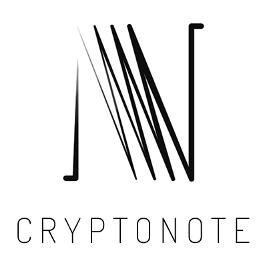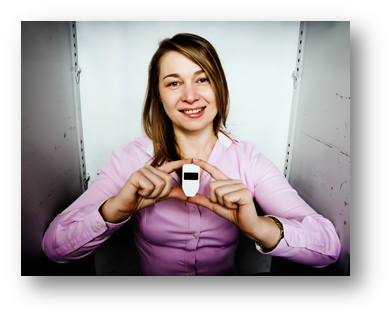A Chat with Harry of Bytecoin, an Anonymous, Egalitarian Cryptocoin
By Mark Norton: Editor @ BitcoinWarrior.net 8/6/2014
In one of Satoshi Nakamoto’s final emails just before going silent, he said he was moving on to other things. Some, with no good evidence but a little good fun, have proposed that Satoshi moved on to work on a better cryptocurrency: Bytecoin.
Now, as you can see from the title of this site, we have fully drunk the Bitcoin Kool-Aid and fully believe that it’s going to shake the foundations of the world. When we have looked into the morass of altcoins that have sprung up, we occasionally see some coins with features that we like, but we just don’t see how any of them would ever be able to overcome Bitcoin’s network effect. Altcoin’s may have an important role to play in the struggles to come, but we feel that they will be far secondary to the role that Bitcoin will play.
Bytecoin, though, has caught our attention as being something a little bit different for three reasons: pedigree, anonymity, and fairness. Bytecoin is no new pump-and-dump coin. Released on July 4, 2012, it has just celebrated its second anniversary and has overcome a lot of challenges along the way. Further, being built on top of CryptoNote which ensures anonymity of all transactions through use of key signatures – an innovation that allows a transaction to be published, but conceals who among a group of users authorized the transaction. And finally, Bytecoin can still be mined using desktop equipment, something that hasn’t been said about Bitcoin in a long time and which the Bytecoin team seem to want to maintain for as long as possible.
Like Bitcoin, Bytecoin’s origins are shrouded in mystery. It first appeared on the Deepnet and was apparently well-traded for nearly two years before coming into the light in March of this year. The whitepaper was published in October of 2013 by Nicolas van Saberhagen, a name which most believe to be a pseudonym on the model of Satoshi Nakamoto.
I was in touch with one of the developers, a man who only gave me the name ‘Harry’ because, as he says, the team deals with financial security and don’t want to be influenced by external forces. Harry was kind enough to answer a few of my questions:
Could you tell me something of yourself and your involvement with Bytecoin so I can give an introduction to the interview?
Unfortunately, the Bytecoin team deals with the financial privacy issues and that forces us to avoid using our real names. We don’t wish to be influenced by the external forces. However, for the sake of the interview you may call me Harry. I’m a BCN core team member. My background is more economic, but I’m do contribute to the code on minor issues.
 I don’t usually talk about altcoins. There are a lot of arguments for them: That they are a testing ground for innovation that might eventually be incorporated into Bitcoin; that they are a backup for Bitcoin in case a serious flaw is discovered; and that they may work in tandem with Bitcoin filling niche uses. What do you think is real role of altcoins and how do you see that developing over the next few years?
I don’t usually talk about altcoins. There are a lot of arguments for them: That they are a testing ground for innovation that might eventually be incorporated into Bitcoin; that they are a backup for Bitcoin in case a serious flaw is discovered; and that they may work in tandem with Bitcoin filling niche uses. What do you think is real role of altcoins and how do you see that developing over the next few years?
Before we get to the meat of this I’d like to point out that speaking about “altcoins” it is important to distinguish between Bitcoin forks and alternative cryptoplatforms.
As far as the ordinary altcoins’ developers are concerned, it is hard to imagine that they put so much energy and resources in their coins only to be perceived as Bitcoin’s technological donors. Obviously, if you are making your own coin you are going to be looking for acknowledgment and mass adoption or an untargeted niche where you might prosper. However, it seems unlikely that Bitcoin will be dislodged as the leading cryptocurrency in the foreseeable future by any of its up-and-coming forks. As trivial as it seems, Bitcoin possesses the most robust ecosystem with new start-ups popping up almost every day. And  let’s not forget about intensive media coverage. All that put together sets up a very high bar for a potential competitor that is based on Bitcoin fork.
let’s not forget about intensive media coverage. All that put together sets up a very high bar for a potential competitor that is based on Bitcoin fork.
Bytecoin however employs an absolutely different technology and should be perceived as the platform alternative to Bitcoin. Along with Ripple, NXT, and Etherium we represent the next generation of cryptocurrencies. We’re not copying something that’s been created before us; we put forth new ideas and solve the problems that haven’t been addressed previously. Some cryptocoins gain traction through massive marketing hype, take Dogecoin for example. Bytecoin, on the other hand, picked its way up through innovation. It allows for completely anonymous transactions through ring signatures and one-time keys. It also provides a number of other features that I’ll discuss further on.
I’ve noticed that a few people have said that Bytecoin is the project Satoshi moved onto when he ceased working on Bitcoin. Any truth to that?
It’s really hard to say. Satoshi Nakamoto is a mystical figure. The technology upon which Bytecoin was built is so complex that I wouldn’t be surprised to know that some great mind was involved in its
creation. Once the drawbacks of Bitcoin became obvious, the idea of the CryptoNote protocol emerged to tackle such issues as the lack of anonymity features, non-egalitarian mining, abrupt block reward halving, and so on, and that served as a pretext for Bytecoin.
BCN was launched in 2012 but the development process had been initiated around the time Bitcoin was announced in 2009. The first developer, who eventually became a legend himself, laid the foundation of the coin only to pass it down to us. So basically, we’ve picked up where he left off.
There are a number of other coins that make anonymity a prime feature. How do they compare to Bitcoin?
First of all, anonymity is indeed one of the Bytecoin’s and CryptoNote’s core features, but not the only one. However, narrowing the scope of this question down to anonymous transactions only, I’m confident that BCN offers the most advanced solution.
Among the other most prominent ones is DarkCoin with its DarkSend feature. It is deemed by most savvy users as a coin that provides pseudo anonymity since DarkSend is an implementation of the CoinJoin specification. The coordinators for the currency’s payment system, MasterNodes, potentially can be compromised due to their centralized nature. The Zerocash protocol is somewhat more efficient and in some ways is comparable to CryptoNote, but it still has to stand the test of the time.
CryptoNote is different from the described technologies in that it is an absolutely autonomous platform that does not require Bitcoin compatibility. Moreover, while others are only promising the financial privacy, Bytecoin has actually implemented it.
Bytecoin is based on Cryptonote technology. For the layman, what is that and what advantages does it give?

CryptoNote allows for creation of absolutely anonymous cryptocurrencies, but the application of the technology itself and our philosophy stretches far beyond that realm.
The way the untraceable payments are executed is through something called ring signatures. This can be described simply as a group of people each with their own private and public keys, any of whom can authorize a payment. If a payment is authorized, an investigator will know that someone from that group, but not which individual, authorized the payment. The privacy of the person making the transaction is protected. Further, each time a transaction is made, a one-time address is created meaning that, unlike Bitcoin, there is no way to trace the transaction through the blockchain. This is a core feature of how transactions are executed with Bytecoin.
CryptoNote also provides an opportunity for egalitarian mining. What that means is that Bytecoin is equally accessible for mining by both average laptops and GPU farms. This does mean that CrytoNote coins are susceptible to botnet mining, but we are still pleased to be able to take ASIC mining out of the equation for the foreseeable future. Making it possible for the layman to mine and own their own coins using everyday equipment is what we refer to as egalitarian mining and what is an indispensable part of our vision.
Among other notable features is the flexibility that CryptoNote offers. Unlike Bitcoin, there are no hard-coded constants, which may difficult to modify when the need arises. We’ve done our best to ensure that the Bytecoin network is as adaptive as possible. We’ve also addressed the issue of block reward halving, which may lead to economic shocks, through a smooth emission curve. And finally, Bytecoin’s coding is way more advanced than Bitcoin’s as we are focused on modular compatibility and reusable multi-purpose code.
 What do you see as the biggest weaknesses of Bitcoin and how do you fix those with Bytecoin?
What do you see as the biggest weaknesses of Bitcoin and how do you fix those with Bytecoin?
In the previous question I’ve covered most significant technical issues that Bitcoin has including block chain analysis and traceability of the payments, non-egalitarian mining, and inflexible code base that could hinder the development. Bytecoin tackles these issues, but our vision is much broader than that.
We are working hard to create a new economic paradigm where Bytecoin and CryptoNote are only part of a much larger ecosystem. In spite of Bitcoin being a technologically decentralized currency, it is still in line with the asset centralization paradigm. According to our vision, a much more vibrant and diverse economy will emerge on top of cryptocurrencies. In the long run this will unlock the characteristics and opportunities of the economic system that hardly anyone is even aware of at the moment. The ultimate goal of CryptoNote is to emancipate the layman through innovative tools in order to shift the current financial paradigm. And Bytecoin is the first step to reach it.
Broadening the scope of the conversation, Ben Lawsky recently published his proposed rules for a so-called BitLicense. If enacted as currently written, how will that affect Bytecoin?
It is not a surprise that financial regulators won’t leave Bitcoin and other cryptocurrencies alone even at such an early stage of development. We all are working for the sake of the people, to give them the opportunity for justice and financial freedom devoid of constant government oversight.
Certainly, a BitLicense may impact Bytecoin once the currency has gained more exposure, especially since the whole idea of the coin is built around anonymous transactions. The good news is that BCN allows both financial privacy and completely transparent economic activity (which still do not de-anonymize the other involved parties) depending on the user’s purpose.
One of the biggest problems all cryptocurrencies face is finding places to spend them and the ease with which they can be converted to fiat. If the Bytecoin or CryptoNote fall under the gaze of a BitLicense, we have no doubt that our platform would be able to deal with the regulators and influence the world economy – making it more egalitarian and fair. After all, we’ve addressed a lot of issues in the 2 years since Bytecoin’s launch, and I guess we’ve proven that Bytecoin has what it takes to beat the odds.
Despite being around for two years, Bytecoin really only revealed itself in March of this year. Why the delay?
In fact, when Bytecoin was created, there was a lot less information about it, or about Bitcoin for that matter, than there is these days. The coin was known since its inception and while the idea of anonymous transactions was gaining ground within the bitcoin community, Bytecoin started to get more recognition. Information is naturally asymmetric, something that those who missed the initial launch seem to forget.
Bytecoin was the first anonymous crytocurrency ever created. It’s important to remember that there are parts of the world where activities such as creating an anonymous cryptocurrency may have harsh, unwanted consequences. The core team and the original community members were scientists who hailed from all over the world. This is one of the reasons Bytecoin was initially promoted within the scientific communities dealing with wide array of issues including high energy physics.
I’d have to say, though, that we’re doing what we’re good at. Our culture is built on hard work with a deep focus on technology rather than on PR or hype. That is what has allowed us to overcome the current technological limitations and develop a whole new crypto-platform.
The process of making Bytecoin better never stops. Currently we are working on an innovative technology and convenient tools to use it. The time has come to reinvent the spirit of iPhone for the cryptocurrency market and we’ll make sure it is built around Bytecoin.
We want to thank the good folks at Bytecoin for taking the time to answer our questions. To find more information, please visit the following sites:
http://bytecoin.org – Bytecoin BCN
https://cryptonote.org – CryptoNote Technology
https://cryptonote.org/whitepaper.pdf – CryptoNote white paper
http://bytecoin.org/timeline – Bytecoin’s milestones throughout the last 2 years
(Edited for clarity.)

